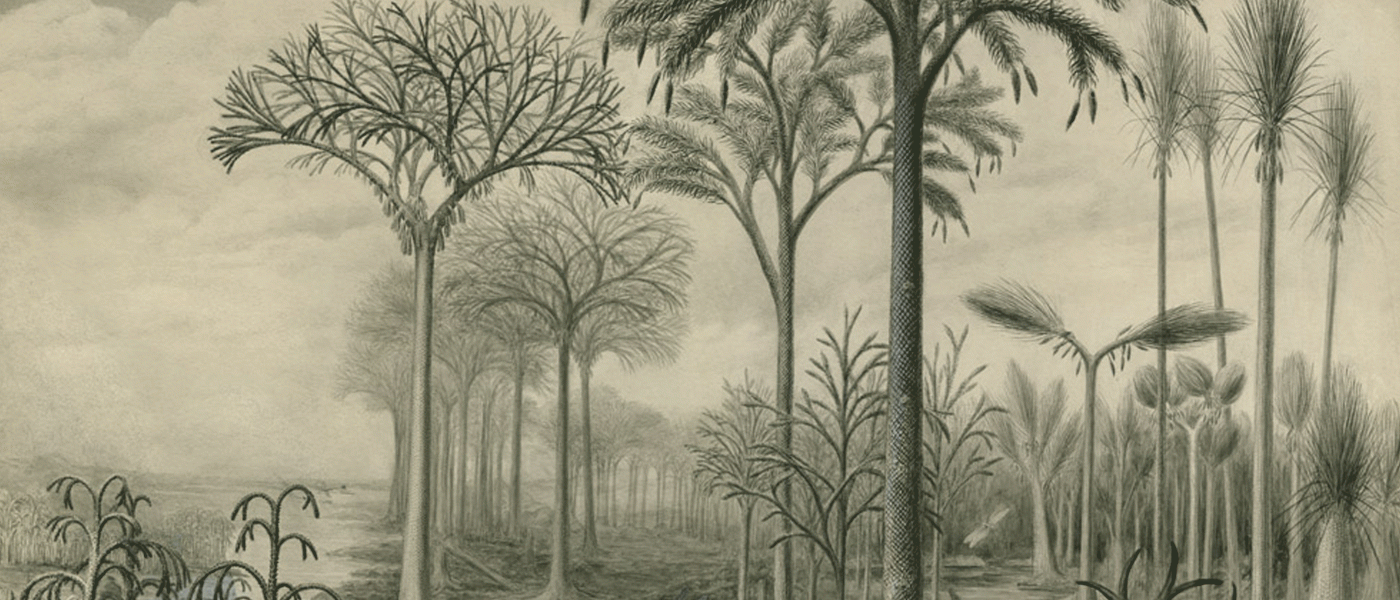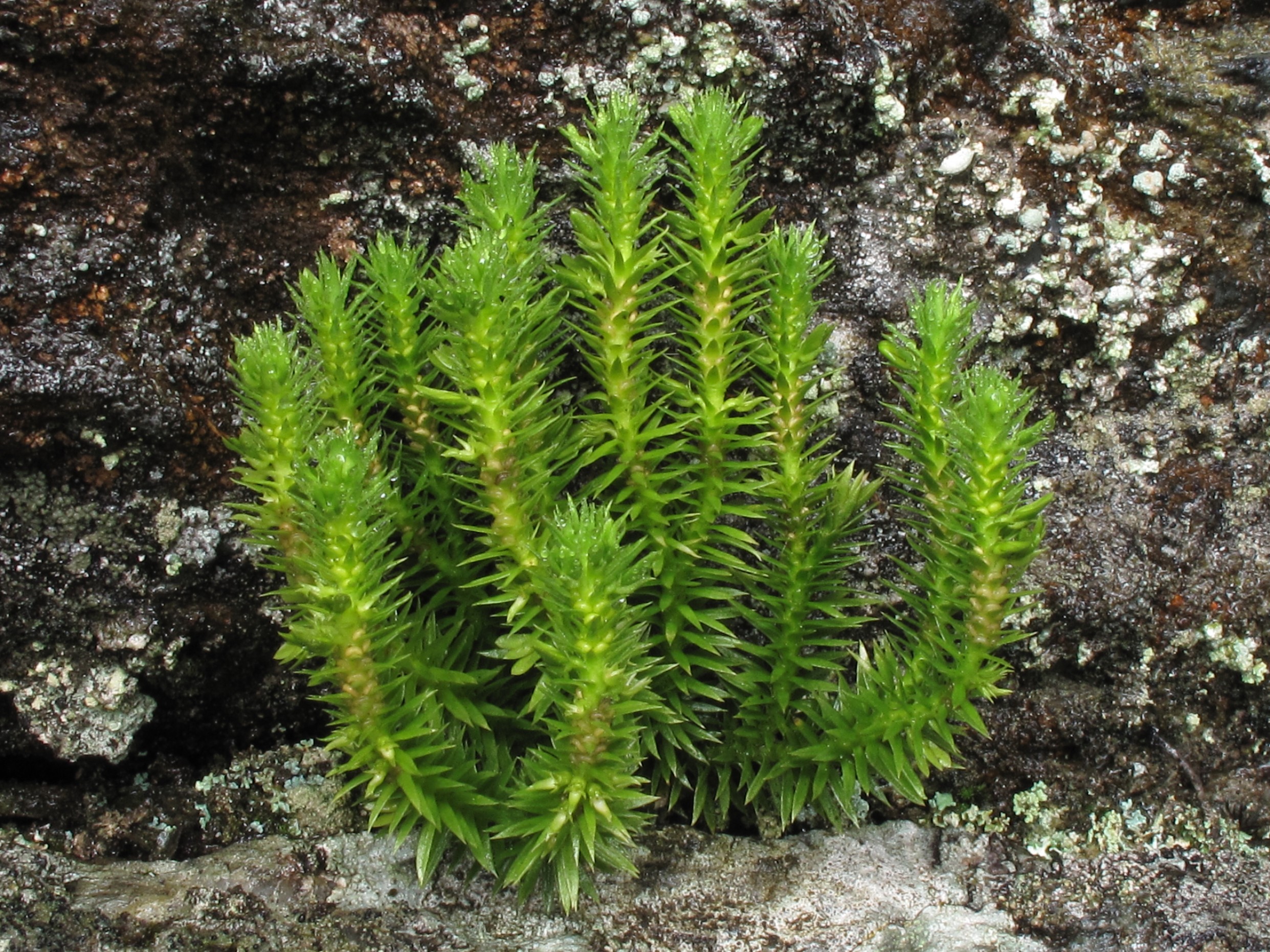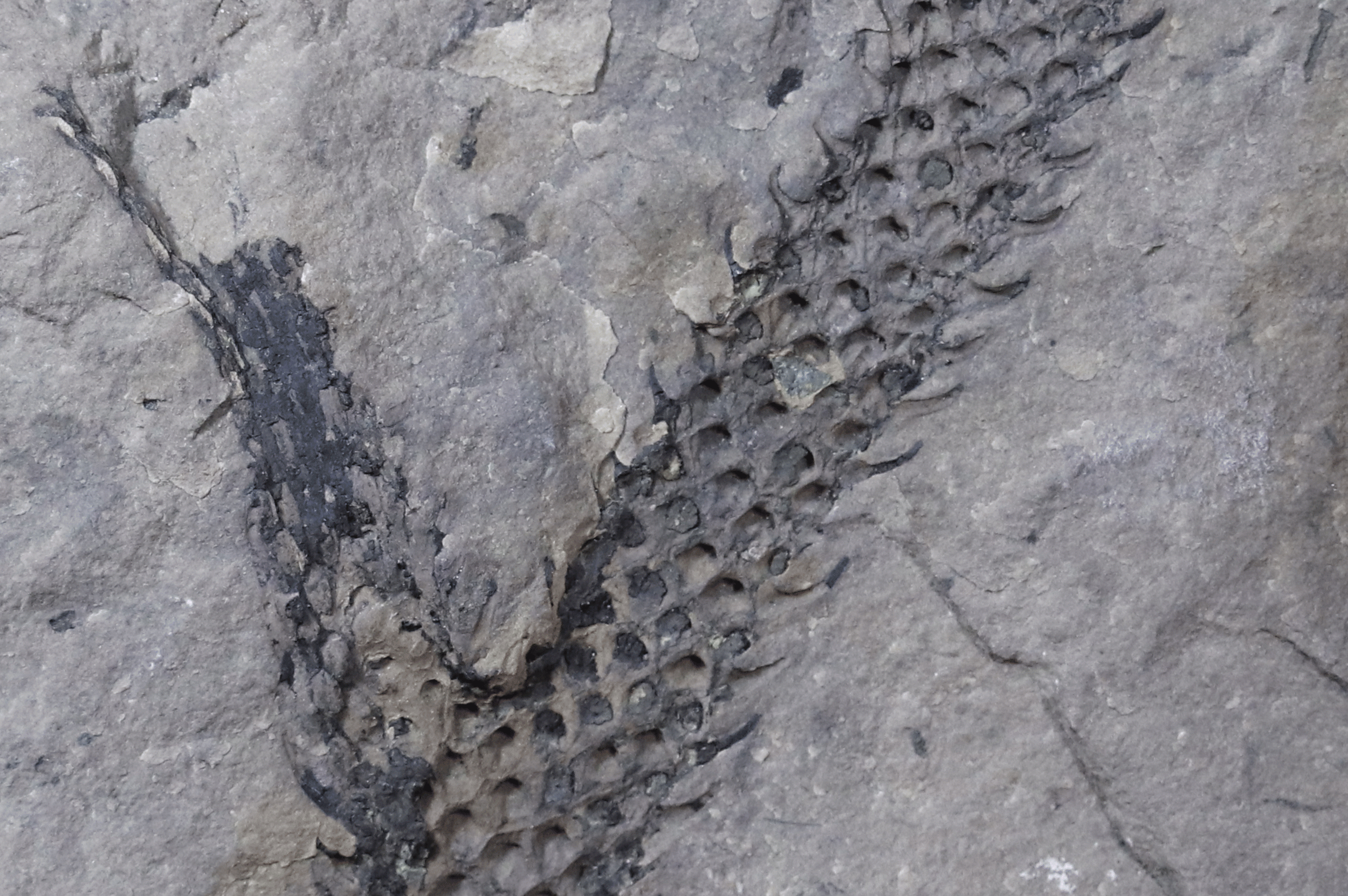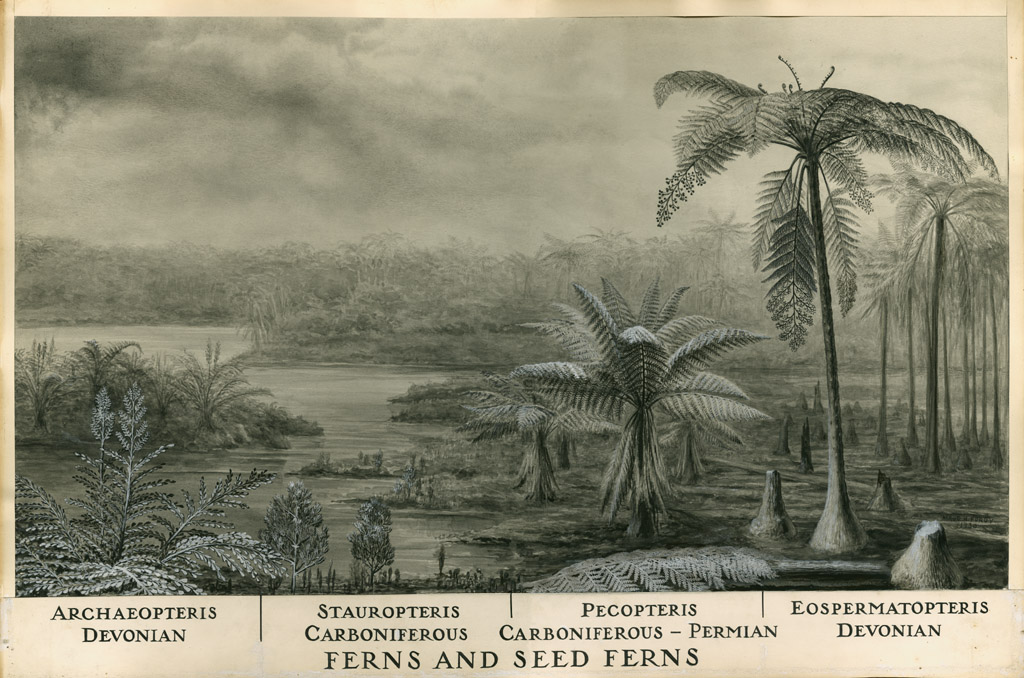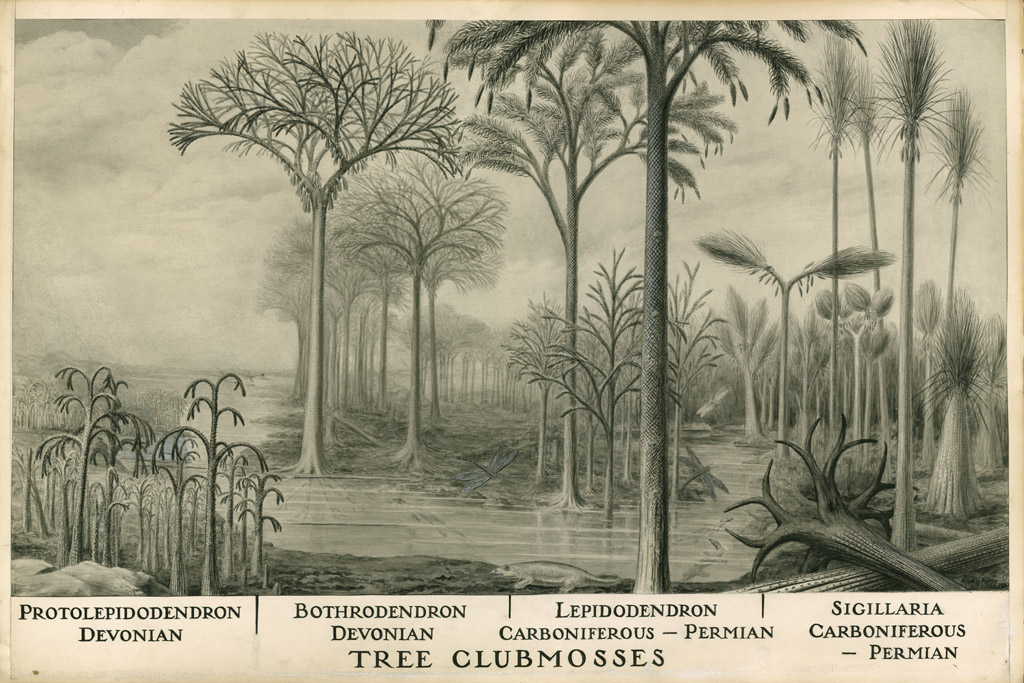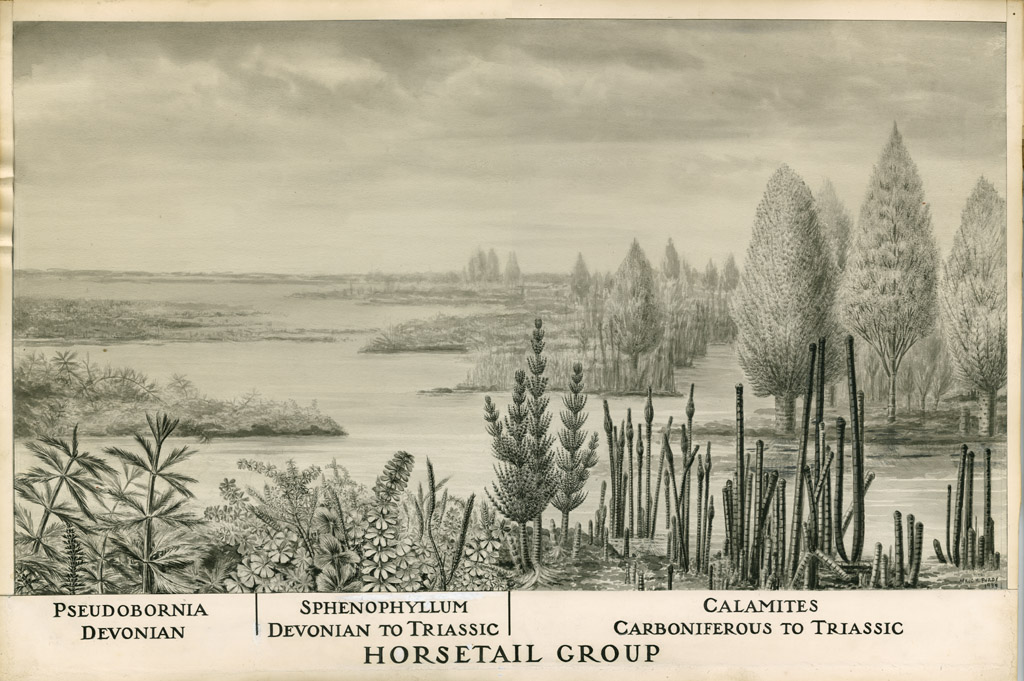Great Moments in Plant Evolution, Part 2: The Origin of Trees and Forests
In the last blog in our plant evolution series Plants Invade the Land, we saw plants evolving onto the land from their aquatic ancestors. Early land plants evolved the ability to branch, which set the stage for an evolutionary explosion in diversity and form. This radiation of plant diversity came during a fascinating time called the Devonian period (419–359 mya).
At the beginning of this period, plants started out small and relatively simple in structure, but by the end of the Devonian, plants were tree-sized, with a dazzling display of complex forms or anatomies. This Devonian diversification brings about the origin of fundamental structures found in most plants today: roots, leaves, wood, and seeds. For paleobotanists it is a wondrous time, rivaled only by the radiation of flowering plants nearly 250 million years later. But let’s not get ahead of ourselves.
In the early Devonian, plants continued the increase in height and complexity that started in the Silurian period. From those plants, new groups arise, such as lycophytes, including the modern club mosses. Some lycophytes evolved the first rooting systems on Earth, which allowed plants better anchorage on the ground, and absorption of water to feed upright photosynthetic stems. Early club mosses also appear in the fossil record, with their moss-like leaves, called microphylls, which increased the ability to capture light for photosynthesis. These microphylls are probably not related to the leaves found in flowering plants, but they represent nature’s first attempt at leaves and they survive to this day.
Another groups of plants also evolved during this time, called the euphyllophytes. This group will eventually give rise to ferns, gymnosperms, and angiosperms, but they start their evolutionary journey competing with other plants for space and light, displaying a sophisticated ability for branching and upright growth.
Some of these early euphyllophytes could grow up to 10 feet tall, and eventually, by the Middle Devonian these plants would evolve into the first treelike plants (Eospermatopteris). These plants were over 25 feet tall, and 3 feet wide, with a bulblike base that tapered to smaller and smaller upright stems. Surprisingly, these plants lacked both the woody growth and leaves that we would expect in a true tree. Instead, recent fossil findings indicate that they had photosynthetic twigs at the top.
It’s not until the Late Devonian that we find the first true tree: a plant with woody growth that increases the girth of the plant. This tree (Archaeopteris) was very successful, and could reach 100 feet tall with large fernlike leaves, creating Earth’s first forests with a shaded understory. In fact, the increase in these trees during the Late Devonian with large root systems that weathered soils, as well as old leaves and branches falling into the water, may have severely disrupted the aquatic ecosystems and eventually led to the extinction of half of the planet’s marine life. The Devonian Extinction ends this period, and leads us to the Carboniferous period (359–299 mya).
The Carboniferous, also known as the Coal Age, is a time when ecosystems became much more diverse, compared to earlier times. For the first time, we see an increase in land-based food webs, with herbivores and carnivores living in tropical swamps around the Earth. The continued evolution of the club mosses allowed them to become immense trees (Lepidodendron) that grew quickly, but were weakly built compared to modern trees. These trees were successful in dominating these swamps, and some may have died after reproducing only once, similar to the modern century plant (Agave americana).
We also see the first tree ferns with enormous fronds (Psaronius) growing in the understory of these swamps, along with tree-sized horsetails (Calamites), which are cousins of the living horsetail, Equisetum. It is the age of large spore-bearing plants, growing in humid conditions that produced massive amounts of debris.
While ecosystems were becoming more complex, this overload of plant material created conditions in which it did not decompose quickly. Instead, this debris was overgrown and compressed into the ground. The carbon dioxide that these plants absorbed and turned into leaves and stems became sequestered in the form of coal over millions of years. In our modern world, as we burn coal and other fossil fuels, we tap into energy that comes from plants that lived over 300 million years ago. In the process, we release a massive amount of that ancient carbon back into our atmosphere at an alarming rate in a very short span of time.
As we continue our geologic journey through time, next we will start to see plants that seem more familiar to us, like conifers and ginkgoes.
The history of life on Earth can be unbelievably daunting to comprehend, with so many millions of years before the advent of humans. This is the realm of the paleontologist, searching for clues to understand evolution, and hopefully to shed light on the present. As a multipart series, we will explore some of the major events during the evolution of plants.
Next: Great Moments in Plant Evolution, Part 3: Extinction to Ginkgo


